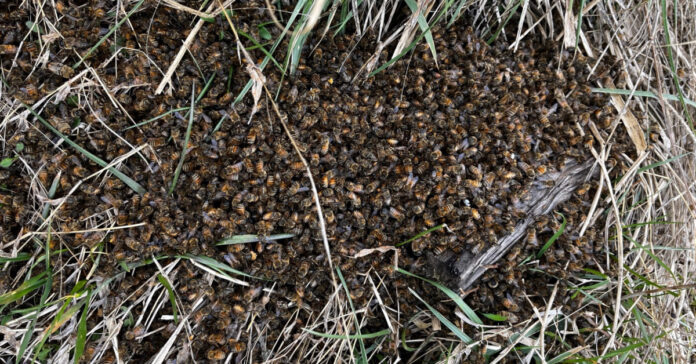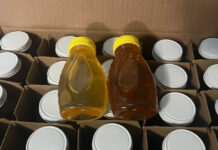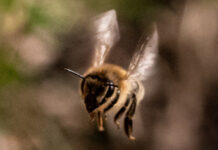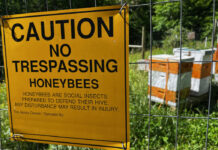Whew! It’s been one of those weeks.
I’ve left my house and drove somewhere every day for the past 7 days, something I have not done since before COVID hit in 2020. Because I live in the middle of nowhere, I had a minimum trip of 30 minutes and a maximum trip of closer to two hours one way. So my seven trips meant I drove about 12 hours.
And if that wasn’t bad enough, I had to get up early. Man, this going back to work stuff kinda sucks. It’s been a week and I already miss my early retirement.
But beyond my personal foibles, it’s also been a sad week on the homestead.
A Dead Hive
Despite all six of my beehives looking very strong when I looked at them two weeks ago, one of them died over the recent period of cold weather. I believe they starved or perhaps were starving and thus unable to keep themselves warm, so they froze.
It’s a real shame because this hive was packed with bees. Unfortunately, lots of bees eat lots of honey when it gets cold. They stripped every cell in every frame, leaving me brood that had been frozen and dead bees with their tails sticking out of the comb.
In contrast, all the other hives had plenty of resources (nectar, honey, and pollen) left in them, but they didn’t have as much brood. I think the queens stopped laying eggs during the cold weather and they may have had to sacrifice some brood as well. Remember, we’re talking 19° nights with a day or two when it never lefts the twenties. It’s enough to make the mid-fifties and low sixties we had a few days this week seem warm.
I had one hive die last year, but it was almost empty. I believe it died slowly due to a lack of a queen. This one died rapidly, as if Mr. Freeze came along and zapped them. I guess, in a way, that’s pretty much what happened.
The cold weather seems to have brought an untimely end to the maple blossoms as well. They had been turning red for just a few days, but now there is no more red on the mountain sides. It will be interesting to see if the maples recover or if there are other varieties of maples that start to bloom later. They are an important early source of nectar and pollen for the bees.
In any case, I started feeding my bees again to help them rebuild their strength.
Two Strong Hives
Two of the five remaining hives are very strong. We’re talking so strong I was thinking of splitting them. Instead, I took frames of honey, pollen and brood from them and re-populated the hive that held the dead colony. It was like making a nuc, but not giving them a queen. I’ll check in 10 days and see if they have created any queen cups. By replacing the frames I took with empty frames, it will relieve the pressure on those strong hives and reduce the chance of them swarming.
Before the cold hit, the bees had an early growth spurt and I expected them to keep growing. Well, the cold pushed the growth spurt back a few weeks. The hive populations will be flat for a couple weeks as the queen lays new eggs and we wait 21 days for the bees to hatch. That means we’ll see growth explode in mid-April, which is more consistent with our normal time frame.
During Friday’s hive inspection, I did not see any queen cups. I plan to re-inspect between the 3rd and 5th of April. If I see any signs of swarm cells or overcrowding, I will split those hives then. The next six to eight weeks are key swarming season in our area. I avoided swarms last year with good hive management and by performing an emergency split. I hope to avoid swarms this year as well.
On our next warm day, I will paint all the woodenware I have built. On the next rainy one, I’ll build more frames. Assuming that I am at home.
A Broody Hen?
After the cold, one of my hens was acting strange. When I opened the chicken coop, all the chickens would run out, except her. At the same time, a chicken was laying eggs in the coop’s corner rather than in their traditional nesting boxes. Hmm, I wondered, is this hen getting broody?
A broody hen is one that sits on her eggs to hatch them, something they only do at certain times of year. Some hens never get broody. This one was a Speckled Sussex, a breed I purchased because they get broody and are supposed to be good mothers.
This behavior went on for a few days. Then I found her one morning in the wheelbarrow, which is full of straw, sitting on two eggs. Aha, I thought, she is so broody that she didn’t even go inside the coop at night, preferring to stay in the wheelbarrow sitting on two eggs. I was a little excited and planned to slip a few more eggs under there the next morning. (A hen will hatch another hen’s eggs and raise the chicks without thinking twice about it.)
That night, while walking the dog, I noticed the hen was under the wheelbarrow. Not in it. She was as dead as a cartoon chicken with plus signs for eyes. So much for being broody.
We ate the eggs, but not the chicken. We don’t eat birds that died of unknown causes.








